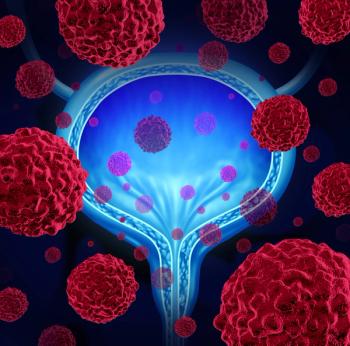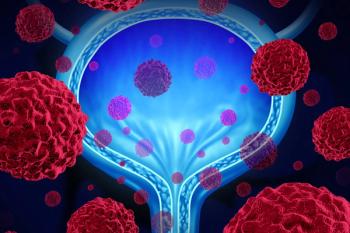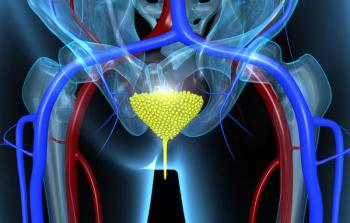
Atezolizumab Shows Promise in Advanced Urothelial Carcinoma
The anti-PD-L1 antibody atezolizumab showed significantly improved objective response rates compared to historic controls in a phase II study of patients with locally advanced or metastatic urothelial carcinoma previously treated with platinum-based therapy.
The anti–PD-L1 antibody atezolizumab showed significantly improved objective response rates compared to historic controls in a phase II study of patients with locally advanced or metastatic urothelial carcinoma previously treated with platinum-based therapy. Results were presented at the 2016 American Society of Clinical Oncology (ASCO) Genitourinary Cancers Symposium, held January 7–9 in San Francisco (
“Daily we are challenged to treat these patients with chemotherapies that are toxic and have no survival benefit in this frail population,” said study lead author Jean Hoffman-Censits, MD, of Jefferson University Hospitals in Philadelphia. “Effective and tolerable therapies for patients with urothelial cancers are desperately needed.”
Atezolizumab inhibits the binding of PD-L1 to PD-1, which can reinvigorate suppressed immune cells, Hoffman-Censits said, but leaves PD-L1/PD-1 interactions intact, which may preserve immune homeostasis.
In the new trial, 311 patients received the study treatment, out of 316 enrolled; of those, 62 were still on therapy, and 248 had discontinued due to disease progression (211 patients), adverse events (13 patients), withdrawal from the study (9 patients), and other reasons (15 patients). Most of the patients were male (78%), and the primary tumor site was the bladder in 74% of patients. Most prior treatments were cisplatin-based (73%), followed by carboplatin and no other platinum therapy (26%).
The patients were stratified by PD-L1 tumor-infiltrating immune cell (IC) status. Based on centrally confirmed RECIST status, the objective response rate was 15% in all comers, 26% in IC2/3 patients, and 18% in IC1/2/3 patients, with lower rates in IC1 and IC0 patients. Investigator-modified RECIST criteria yielded objective response rate rates of 19% in all comers, 27% in IC2/3, and 22% in IC1/2/3.
There were some complete responses, which Hoffman-Censits said was “surprising.” Eleven percent of the IC2/3 patients had a complete response, compared with 6% of IC1/2/3 patients, and 5% in all comers. All three subgroups met the predefined goal of a 10% objective response rate.
The reduction in tumor burden was associated with PD-L1 status as well, with a 61% reduction in IC2/3 patients, a 45% reduction in IC1 patients, and a 30% reduction in IC0 patients.
The median duration of response was not met in any subgroup, and 84% of patients were experiencing an ongoing response at data cutoff, after a median of 11.7 months. The median progression-free survival was 4 months in the IC2/3 patients and 2.2 months in the IC0/1 patients, and 2.7 months in all comers. The median overall survival (OS) was 11.4 months in the IC2/3 patients compared with 6.7 months in the IC0/1 patients; in all patients, the median OS was 7.9 months.
The 12-month OS rate was 48% in IC2/3 patients, 30% in IC0/1 patients, and 36% in all comers. “Considering 12-month OS estimates for second-line chemotherapy are approximately 20%, these data are truly exciting,” Hoffman-Censits said. She added that the drug was generally well tolerated, with 11% experiencing a serious treatment-related adverse event; fatigue was the most common adverse event at 30%, though only 2% were grade 3 or 4.
“Given the current landscape of chemotherapy options for our patients with urothelial carcinoma progressing following platinum chemotherapy … atezolizumab has the potential to change the standard of care,” Hoffman-Censits concluded.
Newsletter
Stay up to date on recent advances in the multidisciplinary approach to cancer.

















































































